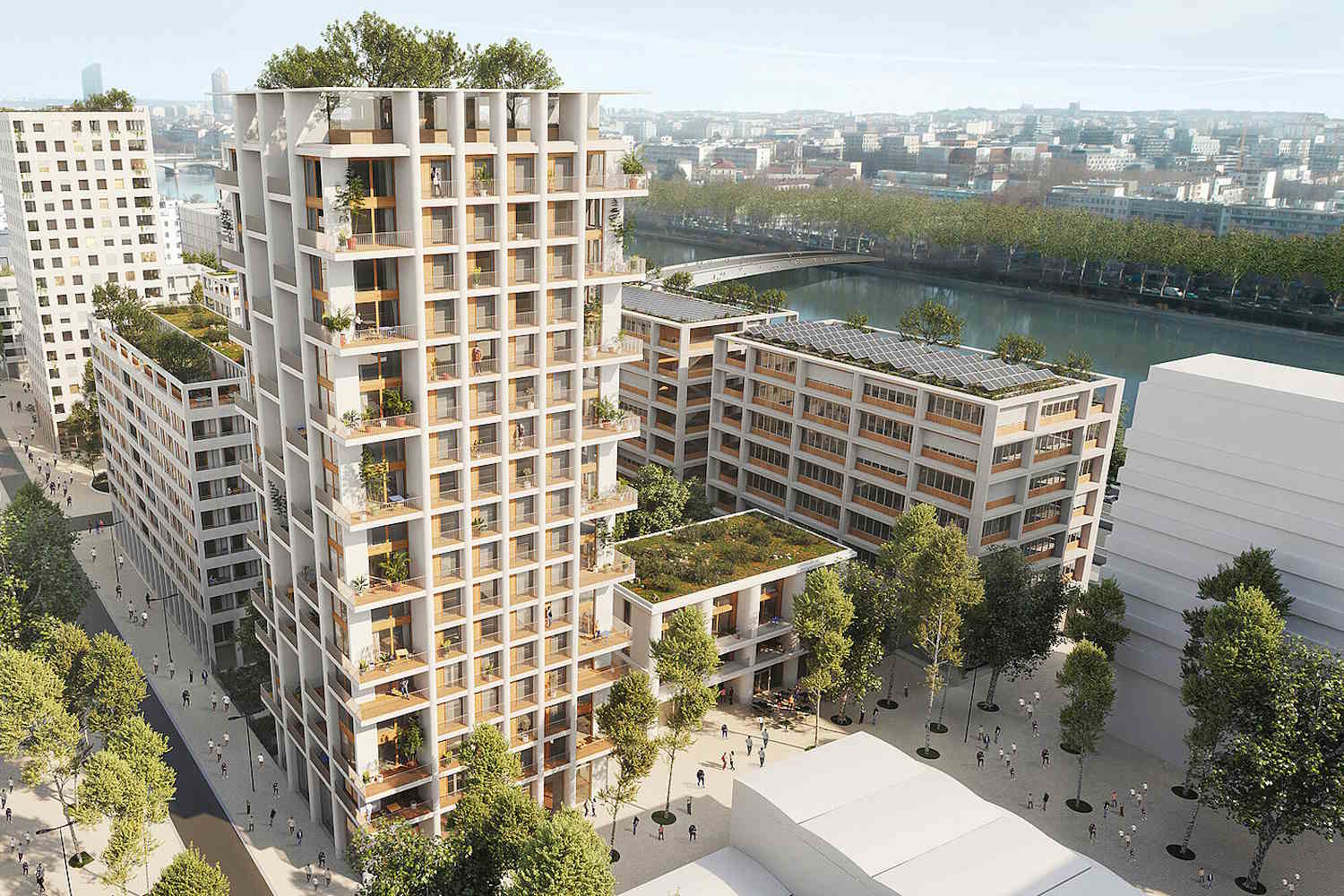The 22-26 building in Lyon combines sustainability with social accessibility, offering a home that consumes minimal energy, maintains a consistent temperature, and promotes green living.

In the heart of the Confluence district in Lyon, France, just a stone’s throw from the Saône River, a building has been unveiled that promises to change the way we think about homes and energy. It’s called 22-26, and its uniqueness is immediately clear: it has no heating or cooling systems, yet it maintains a consistent thermal comfort throughout the year. This is not science fiction, nor an isolated experiment in Northern Europe—it’s happening right now in France. Designed by the Austrian architectural firm Baumschlager Eberle, the project was developed for the real estate group Nexity. And the obvious question arises: Can a home like this really work?
The secret of 22-26
The concept behind 22-26 is surprisingly simple, but its execution requires precision. The building is constructed with very thick hollow bricks, which act like a “natural thermos”: in winter, they retain heat, and in summer, they keep the space cool. Thanks to this thermal inertia, the internal temperature remains steady at around 71.6°F (22°C) during colder months and 78.8°F (26°C) during warmer months, without needing to turn anything on. No buttons to press, no systems to adjust.
Then, there’s the automatic natural ventilation. Yes, the building breathes on its own. A system of intelligent sensors automatically opens and closes windows and shutters based on external weather conditions. This allows fresh air to circulate without any intervention from the inhabitants, ensuring a consistently healthy environment. It’s a new habit, for sure, but one that’s easy to adopt—and, most importantly, it works.
Less energy consumption than any other home
One of the most striking aspects of 22-26 is how little energy it uses: between 2 and 9 kWh per square meter (0.4 and 1.8 kWh per square foot) annually, which is up to five times less than current standards. To put this into perspective, it’s as though you could heat a small apartment with a single candle. While this isn’t literal, it gives you a good idea of just how efficient the building is.
The project also focuses on self-sufficiency: solar panels on the roof provide a portion of the necessary energy. Additionally, every detail of the building has been designed to maximize natural light, minimizing the need for artificial lighting. The goal is clear: live well while consuming only what’s absolutely necessary.
Making sustainability accessible
But 22-26 isn’t just a model of efficiency—it’s also an example of social accessibility. Some of the apartments are available through the Bail Réel Solidaire (BRS) system, which allows people to purchase homes at lower prices by separating the ownership of the land from that of the house itself. This makes homeownership accessible to families with modest incomes.
In this way, the project shows that the ecological transition can be inclusive, not reserved for those with high economic means. It’s a concrete, replicable choice that looks toward the future without leaving anyone behind.
Source: Baumschlager Eberle Architekten
